June turned out to be a busy month both on the water and on the fly tying bench. The rivers are now teeming with bug activity and you just never know when that epic day on the water might arrive… where everything comes together to produce those perfect conditions that bring even the most wary of trout to the surface.
This is the time of year where our fly boxes need to be the most diverse. Depending on the time of day, river and hatches, you might be casting streamers, nymphs, wet flies, emergers, tiny dries, large dries, or even huge topwater patterns. Consequently, I’ve been hitting the tying bench a lot lately, trying to cover all my bases. In what has been an increasing trend of mine, I’ve concentrated more on sub-surface patterns this season to up my odds when fish are either not rising, or when they’re rising but refusing dry flies. Below are some flies I’ve been tying and fishing on some of my local waters.
Grand River
If you fish the Grand River, you know how frustrating it can be if you rely on dry flies to match the hatch. Although I don’t spend as much time on the Grand as I do other rivers, I’ve come to realize that it’s a largely sub surface and emerger river. In response to this, I tied a bunch of the following emerger patters in various sizes, mainly for caddis and blue winged olive hatches. I’m sure that by simply swapping out different colors and materials, these could be used to imitate a much wider variety of caddis and mayflies.
As a reminder of just how versatile you need to be, I set out to the Grand River last Saturday with a friend and a bunch of the above flies. The weather was perfect, flows were low and there had been no rain for many days prior. Our expectations were high: clear conditions, lots of bugs and rising trout. We spent a total of about 12 hours on the water that day and what we were met with instead was very murky, low-visibility water and not a single witnessed fish rise for the entire day (on the upper and mid stretches). We fished during one of the thickest caddis hatches I’d seen in quite some time, with loads of large caddis floating down the river and fluttering helplessly on the surface – yet we didn’t see a single fish come up. It wasn’t until we drove several kilometers downstream to the lower river (which usually has less visibility than the upper) that the water cleared up and we got into some rising fish. I later learned that the water clarity issues were caused by the first big algae bloom of the year.
Credit River
I was on the Credit after work a couple weeks ago and managed to hit a smorgasbord of hatch activity, with Sulphurs, Isonychia and Caddis all in good numbers. Despite the impressive hatches, fish activity was surprisingly average that evening. I saw and caught a few small fish that were rising, but nothing out of the ordinary. The point is, it takes more than nice weather and lots of bugs to reliably bring up larger trout. I’ve fished many smaller hatches on the Credit in the recent past, with much more (and bigger) fish. I specifically remember an evening a couple years ago at the busiest access point on the river (normally the least-productive fishing) where an Isonychia hatch brought numerous 12-16″ browns to the surface in a feeding frenzy.
For the Credit, I find matching the hatch is generally less of a factor than the Grand. More important on the Credit is presentation and stealth. This isn’t surprising considering the greater angling pressure on the Grand and much smaller, technical water of the Credit. If you’re fishing dry flies, you can usually pick a common food source such as an Isonychia, Stonefly or simply use an attractor. Personally, I like bushy dry flies here, unless there’s a prolific hatch going on: a Stimulator or Humpy are two of my favorites. My only gripe with the humpy is that it can be annoyingly difficult to tie.
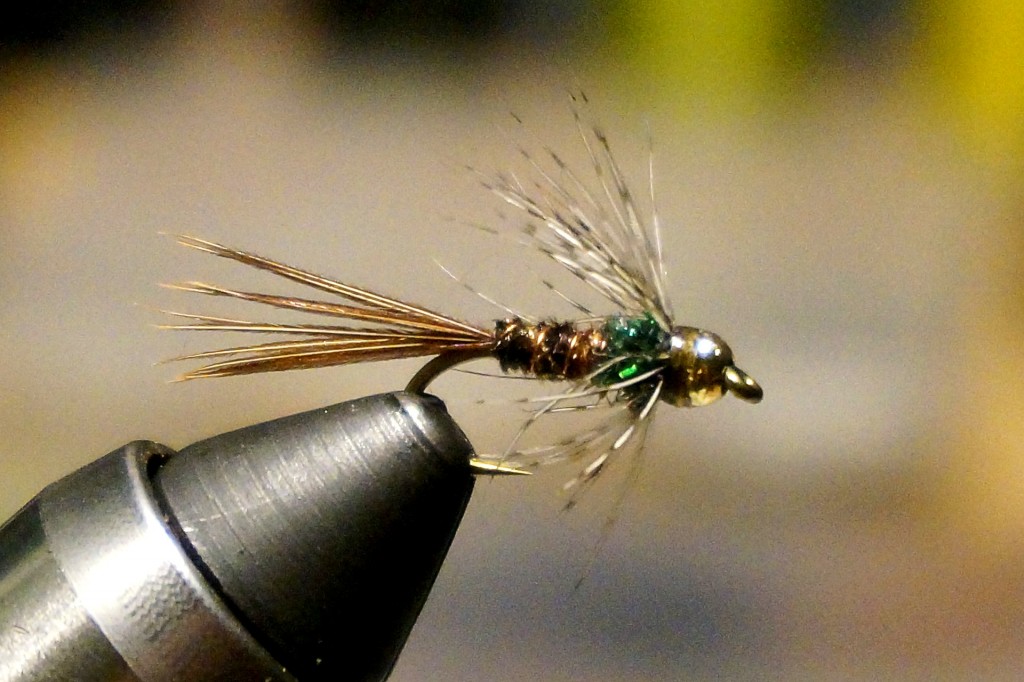
Bead Head Soft Hackle Pheasant Tail: One of my favorite sub-surface flies, especially for pocket water and small streams
If I had to fish the Credit with only two flies, the Stimulator and Bead Head Soft Hackle Pheasant Tail would probably be my choices. As mentioned though, I think fly choice is more a matter of personal preference here. I have no doubt that a good Isonychia nymph or simple Walt’s Worm would do equally as well (if not better).
Stillwaters
My experience with stillwater fly fishing is laregly limitted to local stocked water, with the exception of some native brookies and warm water species. Still, I’ve done some experimenting and found a few options that work well for me. I highly recommend checking out the various videos and articles by fellow Canadians Phil Rowley and Brian Chan, who are highly regarded as experts in this area. They’ll tell you that fly selection is much less important than tactics and this has definitely held true for me. Still, its nice to have a few patterns that have proven to be effective.
Slow retrieved nymphs and chironomids are known to be some of the most productive flies, but I’ve found more actively retrieved streamers to be a good all around choice as well – not just for trout, but also for bass and other species.
The above streamers are easy to tie and have worked well for me for both stocked rainbows and smallmouth bass (for the latter, especially the bugger). On days when fish are rising and sometimes even when there are no visible rises, such as warm days when the water is extremely calm, I’ve had a lot of success with a Stimulator. This versatile fly (shown above) can represent a host of different insects: from stoneflies to caddis to hoppers. It also floats extremely well and can be twitched on the surface to entice a strike.
I dont know if it’s just me though, but it seems that irregardlesss of preparations and fly boxes full of favourite patterns, more often than not I end up on the river feeling as though I’m missing some critical fly. This keeps my vise busy and shopping cart full with new tying materials.

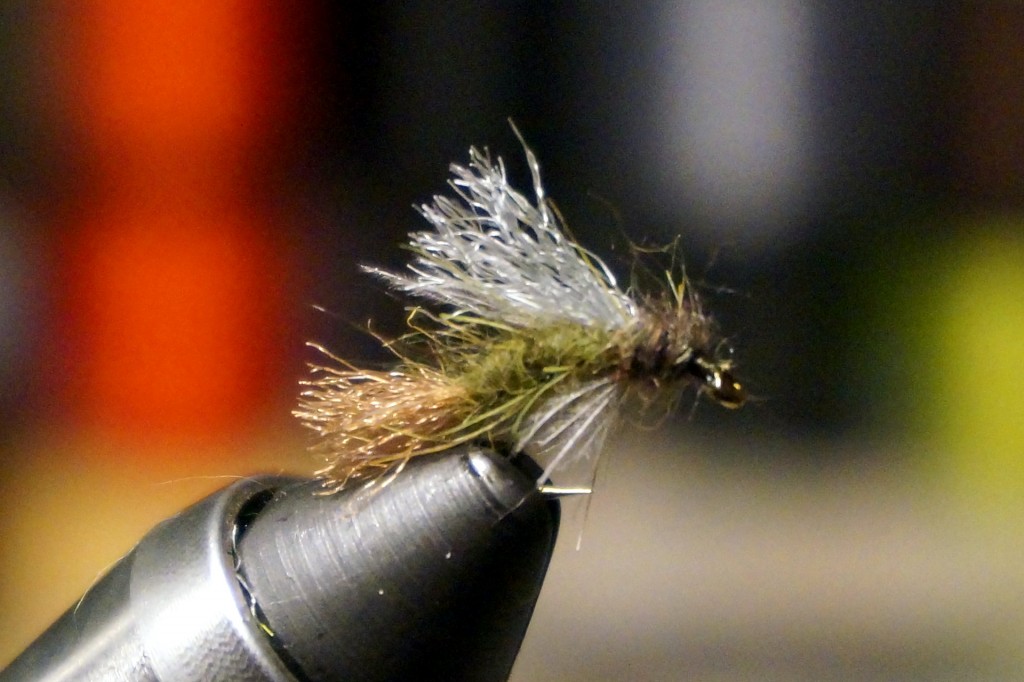
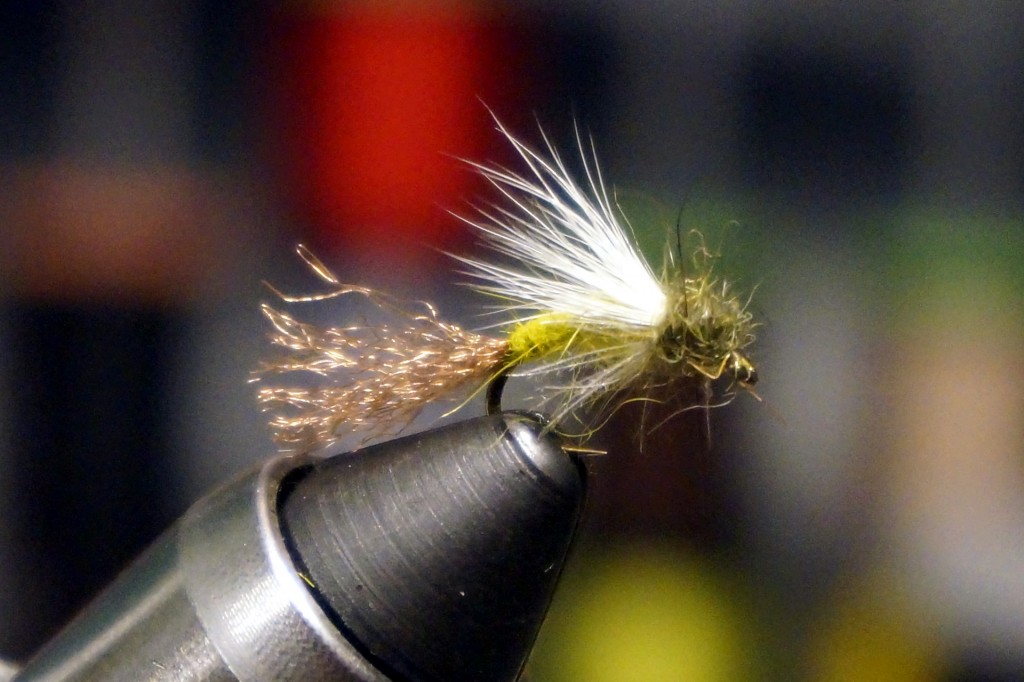
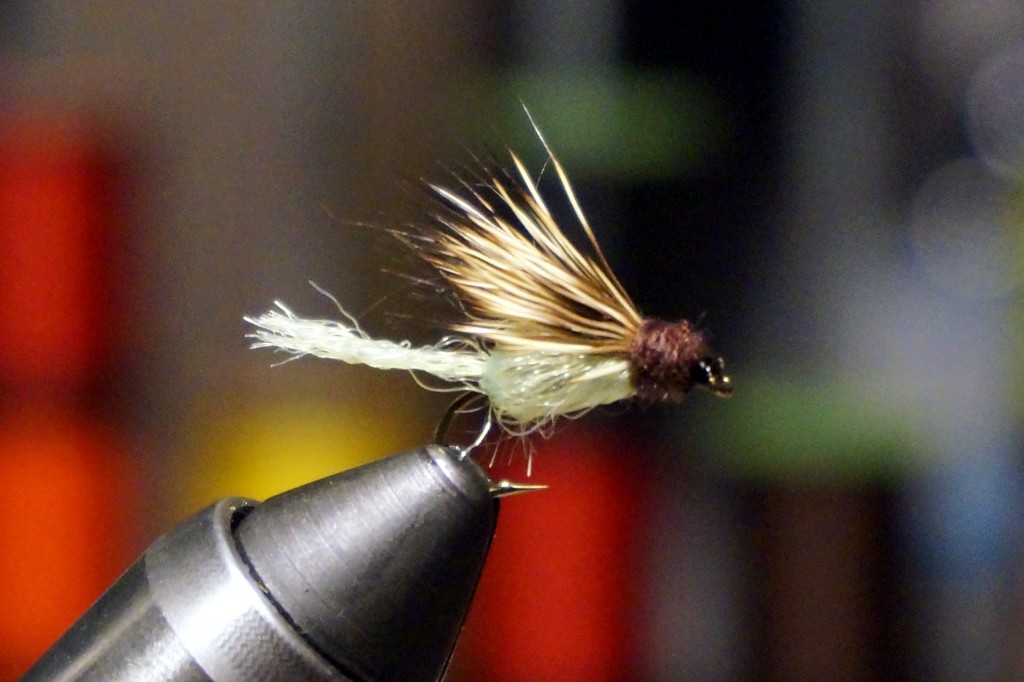
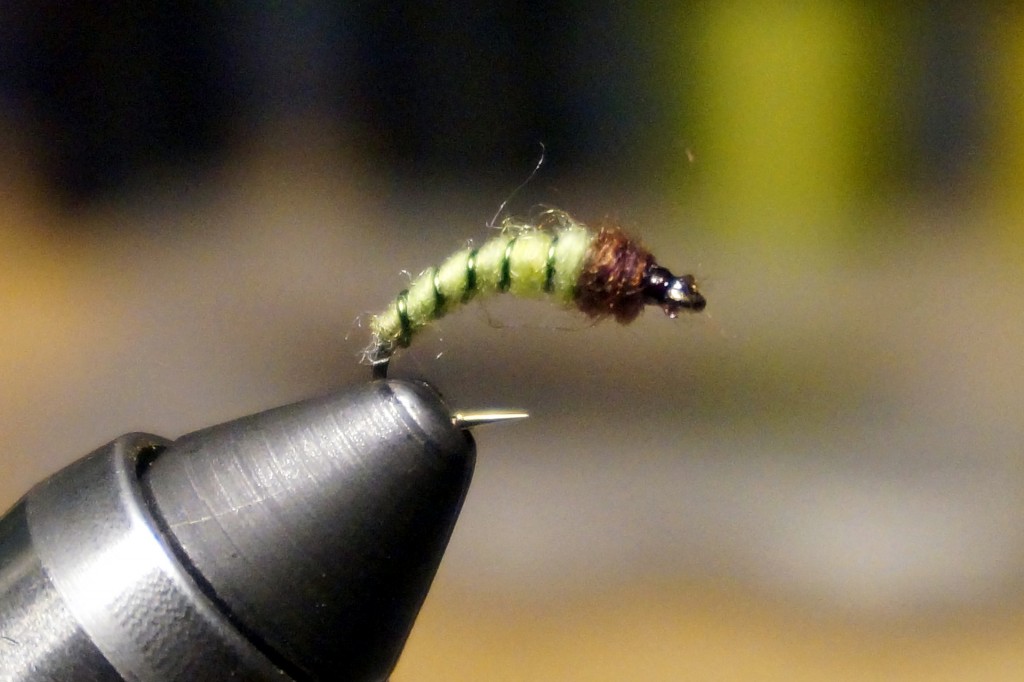
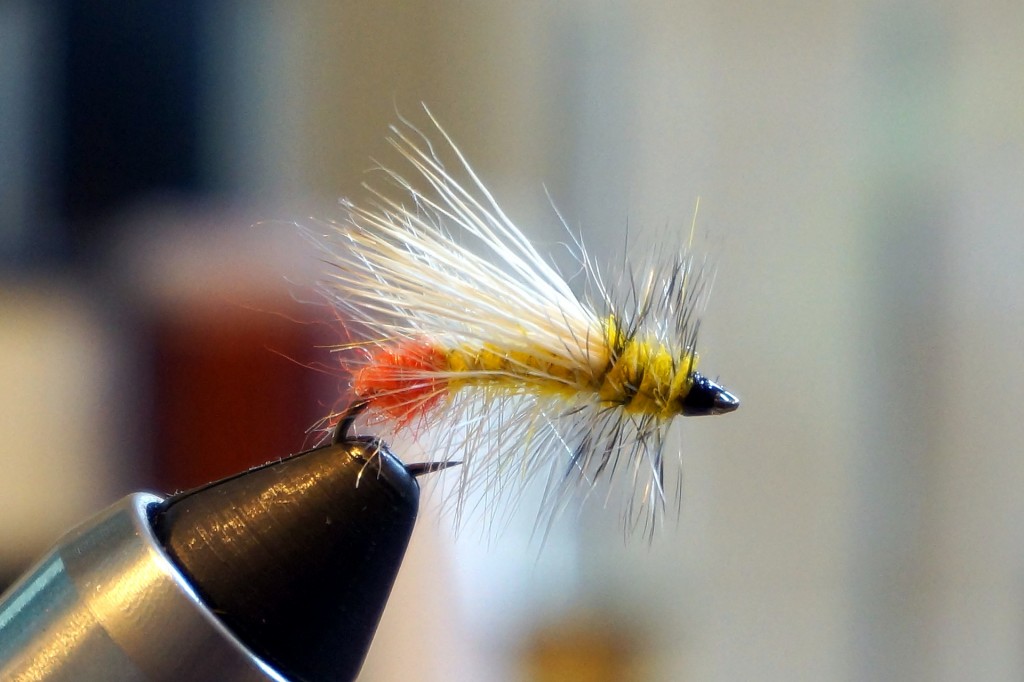
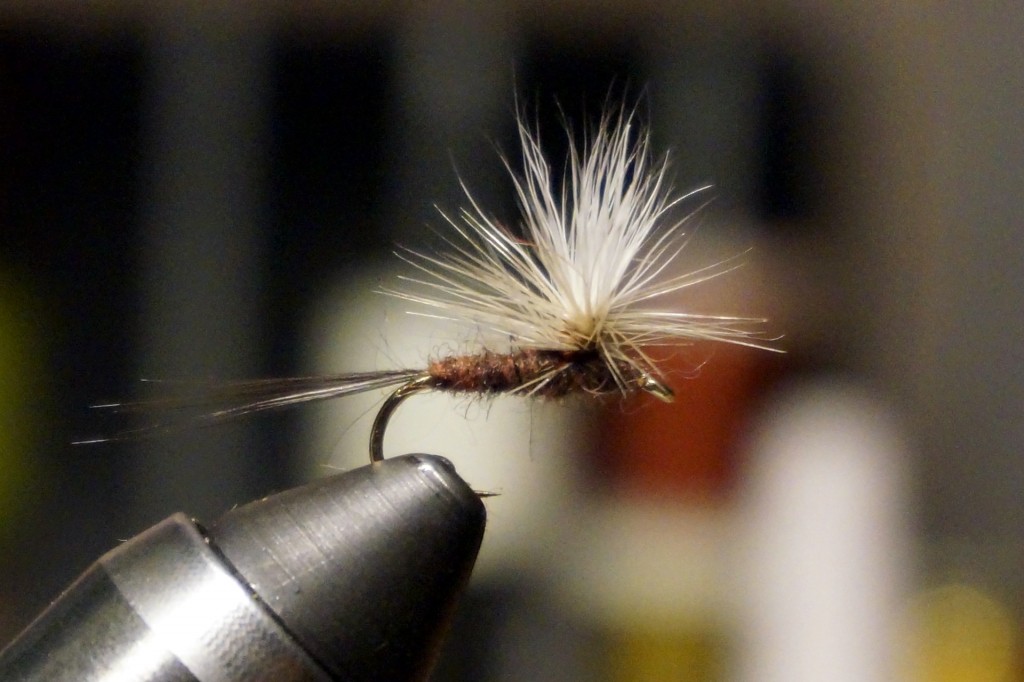
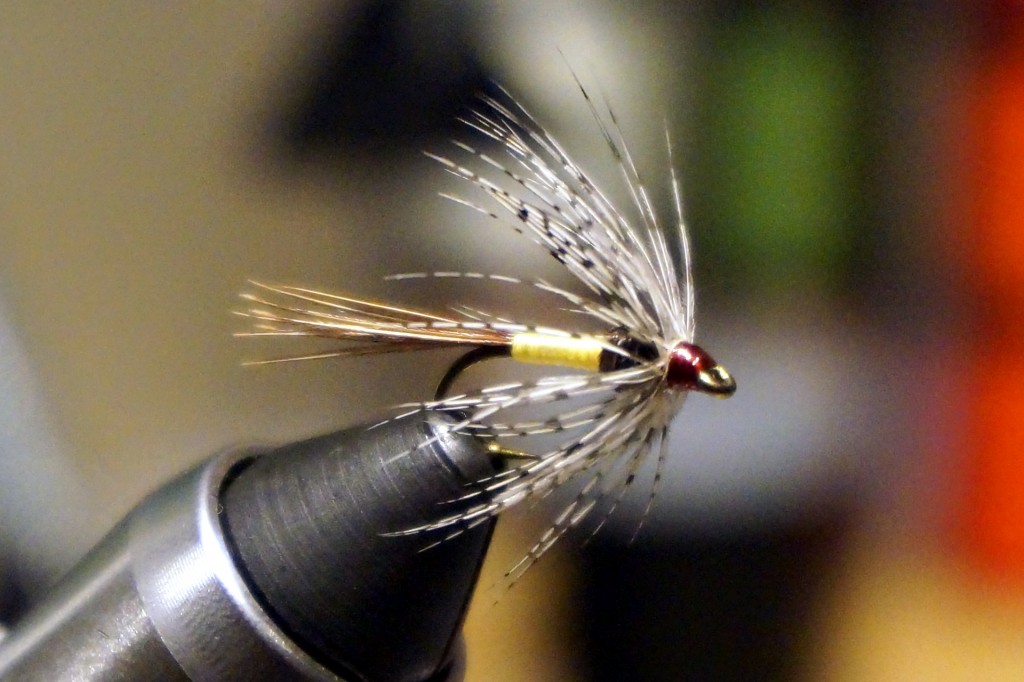
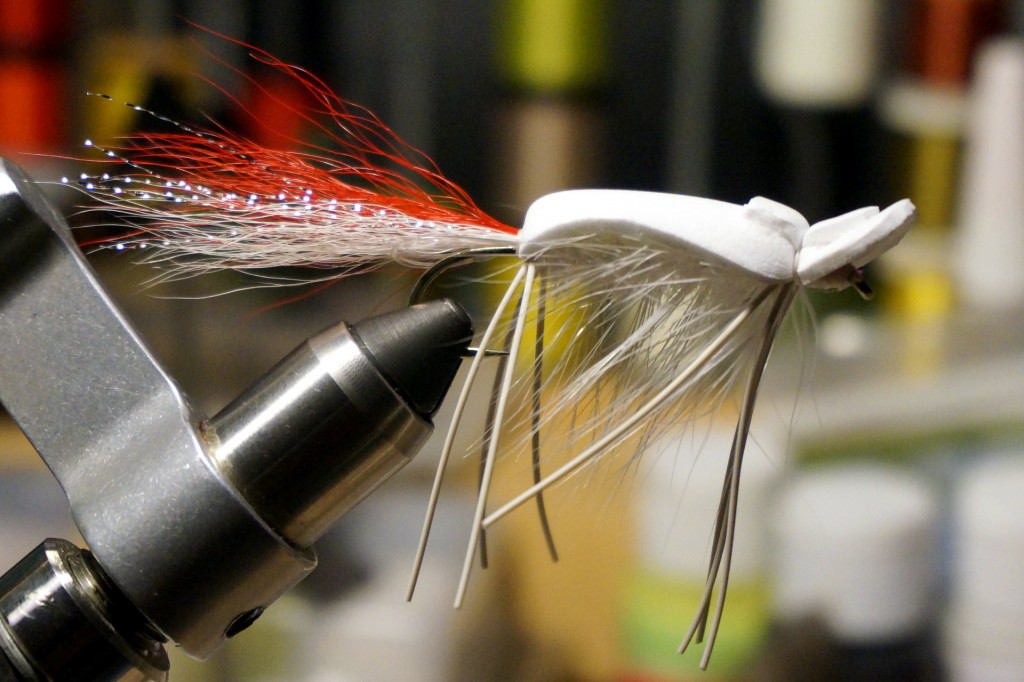
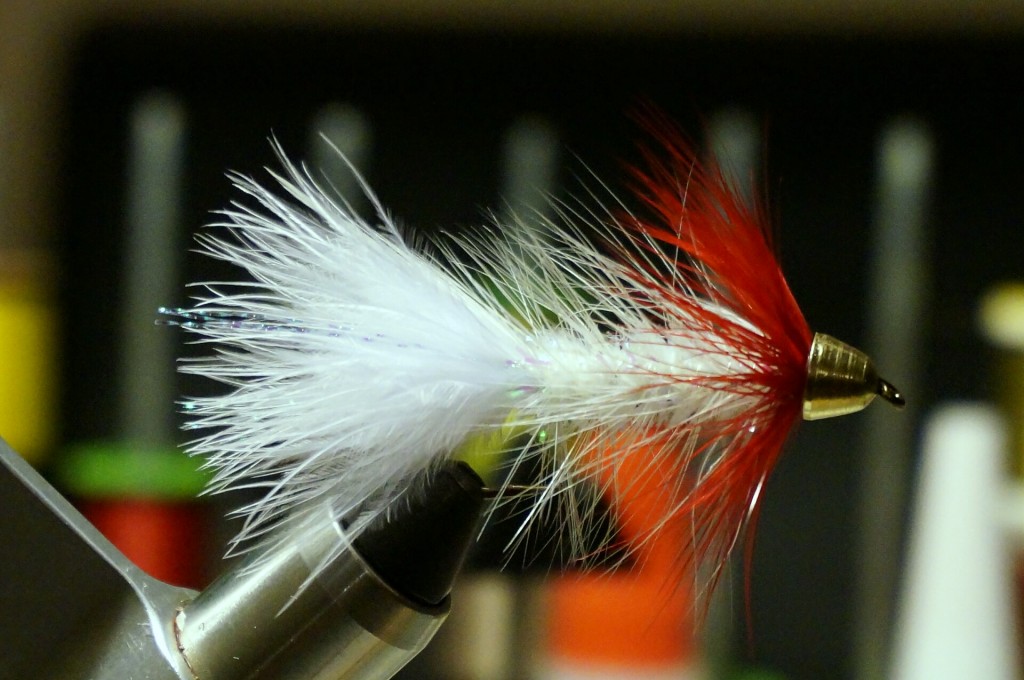
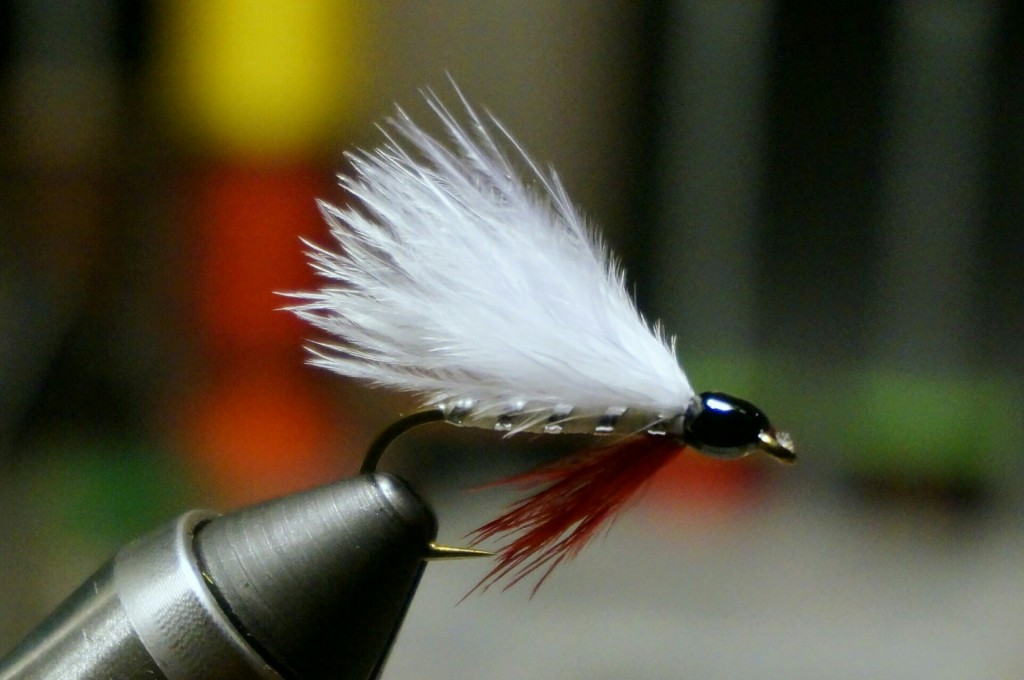
You tie some nice flies! Agree with your comments re Grand river sub-surface action, although I did well on-top with caddis and crane flies on one of our rare overcast days this summer, and on another occasion hit my first decent spinner fall. It amazes me that the trout really seem to key in on tiny crane-flies, when there is meatier fare (such as grey fox) hatching at same time!
I see from your memorable fish page that you have a Hardy Zenith 4 weight – would be interested in how you like it for Grand/Credit…Am currently using 5 weight which is too much for the credit and smaller grand trout, and am considering the 8ft 6in 4 wt zenith or sage circa 8ft 9in 4 weight, which is a slower action rod.
I really like the Zenith, especially in 4wt. It’s such a pleasure to cast and so much less tiresome than my old 5wts. I’ve landed most of my bigger trout on it and it’s been no problem at all. I’ll even throw size 2 streamers with it occasionally and it does just fine.
I retired my 5wt rods and now fish primarily with the 4 for trout, unless I’m planning to only cast big streamers (rare) – in which case I’ll use my 6 (which is currently out of commission, as I busted it in half on the Grand a couple weeks ago) 🙁
Regarding the Grand though… I’ve had some tough days on it this year. Haven’t hit any good hatches yet and I’ve been met with very murky water and lots of algae almost every outing. I haven’t seen the river like this in quite some time, but maybe my timing has just been off/unlucky.